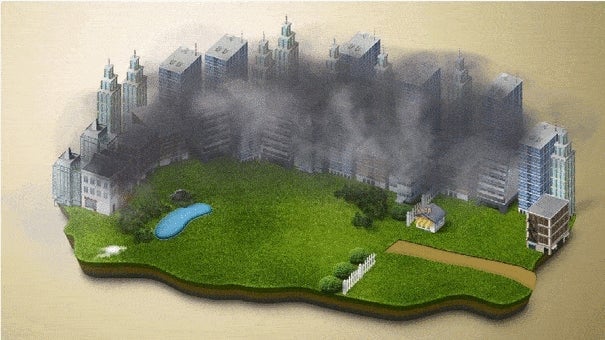This electronic vacuum cleaner could suck up Beijing’s smog


Beijing is no stranger to manipulating the skies. To keep an open-air stadium dry for the 2008 Summer Olympics’ opening ceremonies, Chinese meteorologists developed a technique to reduce the size of raindrops, delaying precipitation until storm clouds pass.
Five years later, could a man-made “vacuum cleaner” for smog be the next step?
Dutch designer Daan Roosegaarde thinks it’s a good place to start. At Dutch Design Week in Eindhoven this week, Roosegaarde presented an “electronic vacuum cleaner” that would help clear smog from the sky. Roosegaarde is working with the mayor of Beijing to demo the technology in a new city park.
So how does it work? In an interview with Dezeen, Roosegaarde said to first think of the way a statically charged balloon attracts hair. In a similar fashion, the smog “cleaner” uses coils of copper to create an electrostatic field that pulls smog particles down to the ground, where they’d be captured and compressed. The copper coils would be buried under grass. It sounds a bit dangerous, but Roosegaarde says the electric field is quite low (and the technology is pacemaker safe).
The goal is to create patches of clear sky about 50 to 60 meters wide. Collaborating with scientists at the Delft University of Technology, Roosegaarde has already produced a working prototype of the smog vacuum. In a 5 x 5 meter smog-filled room, the prototype was able to create a one-cubic-meter smog-free hole. Now the challenge is to scale up for outdoor, public spaces. The team has been testing how high the field can reach, and will spend another 12-15 months at work before implementation in Beijing.
The solution to Beijing’s smog problem is no doubt much larger than “electronic vacuum cleaners” and an occasional patch of sunshine. But by creating a stark contrast in air quality in the middle of public spaces, Roosegaarde’s project would be an inescapable reminder of how bad the problem really is.
“The idea is to make a park in Beijing where you will see the old world and the new world,” explains Roosegaarde to Dezeen. “We’ll drag nature in. It’s Dutch landscape design in a most radical way.”
Jenny Xie is a fellow at The Atlantic Cities.
This originally appeared at The Atlantic Cities. More from our sister site:
The most widespread environmental carcinogen? The air we breathe